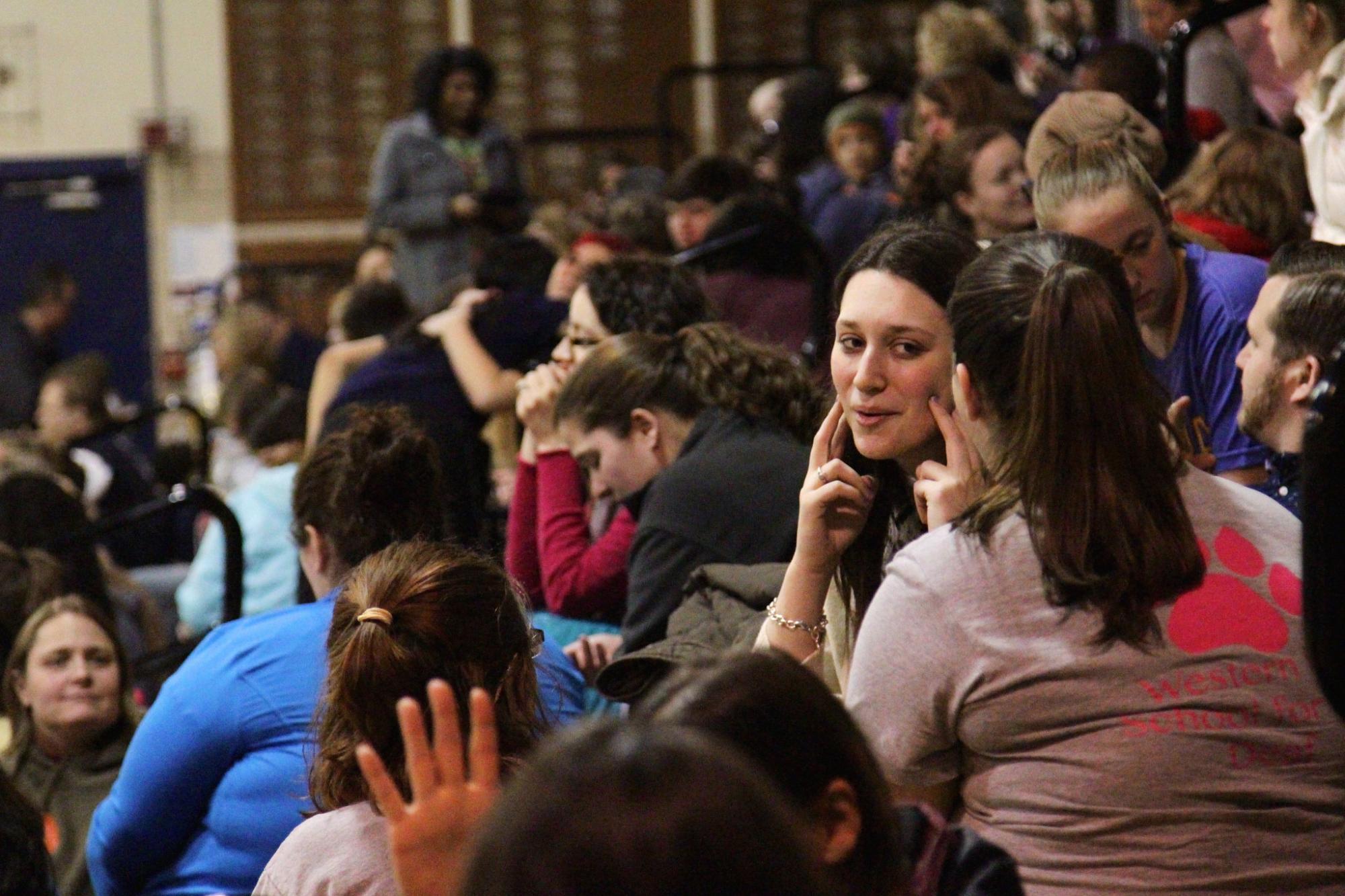
by Benjamin Recchie
Written communication is easy to share and study; audible communication, only slightly less so. But what about communication without speech? The best way to study such communication is via video, and until recently, sharing video on a large scale has been prohibitively difficult. But two scholars of gesture and sign language—Susan Goldin-Meadow, the Bearsdley Ruml Distinguished Service Professor of Psychology and Comparative Human Development, and Diane Brentari, the Mary K. Werkman Professor of Linguistics—are turning their collection of videos on the subject into the nucleus of an authoritative online library: the Sign and Gesture Archive, or SAGA.
Both Brentari and Goldin-Meadows have studied sign language and gesture on their own for decades and (with Anastasia Giannakidou) lead SAGA’s parent organization on campus, the Center for Gesture, Sign, and Language. “I’ve spent most of my life looking at hand movements,” says Goldin-Meadow, studying the interrelationship between gesture, sign language, and the idiosyncratic signs deaf children make up when they aren’t exposed to formal sign language, called homesign. (Gesture, she’s discovered, “doesn’t look at all like homesign, or at all like sign language,” she says. “It actually has cognitive and learning functions.”) Brentari has worked on comparing sign languages around the world. There are over 200 different sign languages, she notes, and “we don’t really have a good map of what the historical or areal groups are, how they influenced one another, how are they different, and how are they the same.”
Acquiring data on these hundreds of sign languages is incredibly labor-intensive, Brentari explains. Each video has to be painstakingly annotated—both the metadata about each participant, including information such as the language of the signer, the spoken language around the signer—and also many particular details about the productions themselves, particulars that are analogous to transcriptions of spoken languages. At the moment, most researchers in the field have their own archive. But there isn’t one centralized location in the US for people to share their data, nor are there standards for the minimal kind of formatting or annotation required.
When Brentari was first hired by the University of Chicago she was introduced to incoming director of the Research Computing Center (RCC), H. Birali Runesha, by a mutual acquaintance, John Goldmsith, Edward Carson Waller Distinguished Service Professor of Linguistics and Computer Science. She was struck by Runesha’s commitment to providing a central data storage capability for researchers on campus. And so, not much later, “when we had this idea for SAGA, we knew it would require partnership with someone like Birali,” she says. The challenges of data storage weren’t difficult compared to some other projects, but they were more than social science researchers were used to.
Besides providing a place to store SAGA’s data (on the Midway supercomputing cluster), RCC is developing new search tools for the archive. Currently, users can search the archive using criteria such as country, language, age of participant, date of session, and a range of publication criteria. They can also search using keywords, or perform open-ended searches of the archive's full metadata records and annotation files. Users can jump directly from their search results into the video archive and download specific files, but by mid-2017, SAGA and RCC hope to be able to allow users to be able to view and annotate files directly as well.
The ultimate goal for the project is to make SAGA the go-to location for sharing videos of sign language and gesture. The combination of Goldin-Meadow’s and Brentari’s archives is just the start: a collaborator in Connecticut who has hundreds of hours of videos of children acquiring sign language is already planning on sharing her data with SAGA. “It’s a baby,” Goldin-Meadow says. “And it’s growing.”